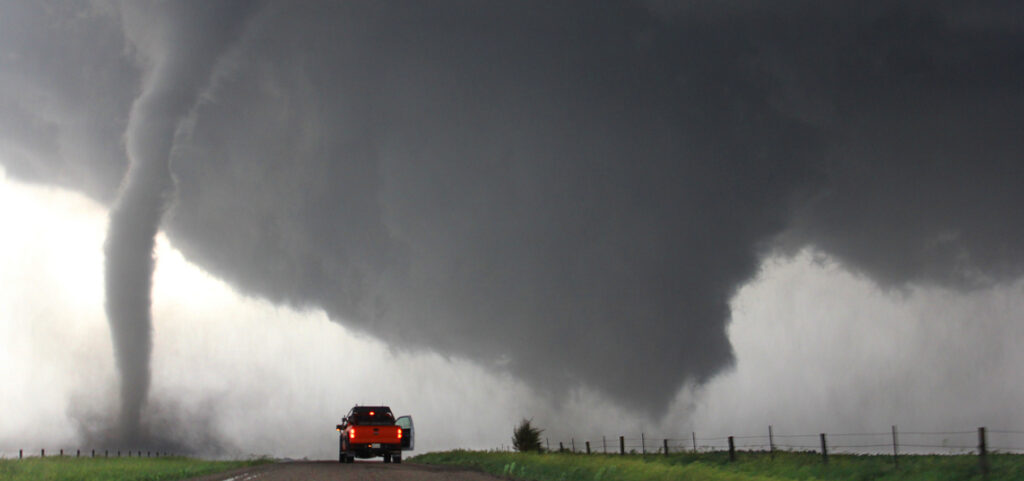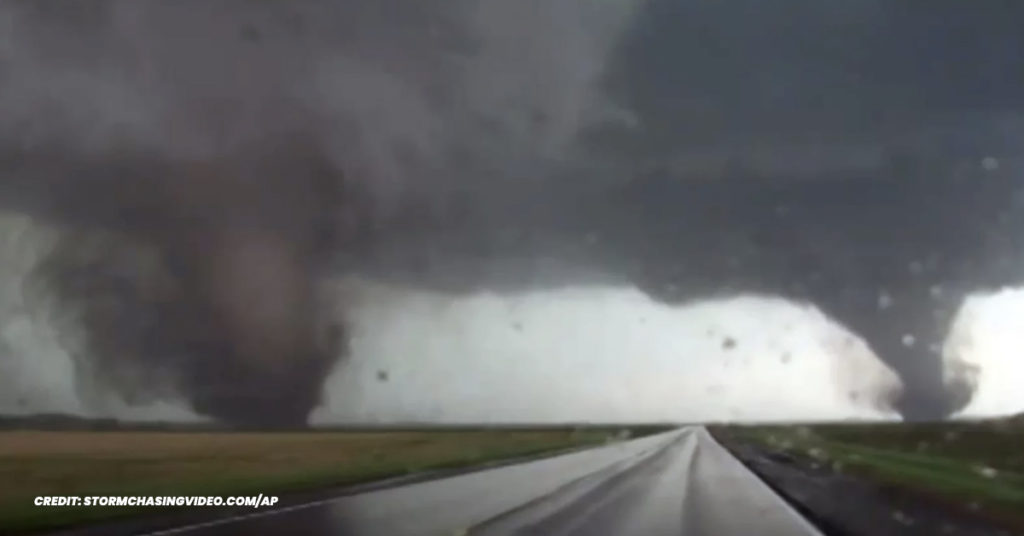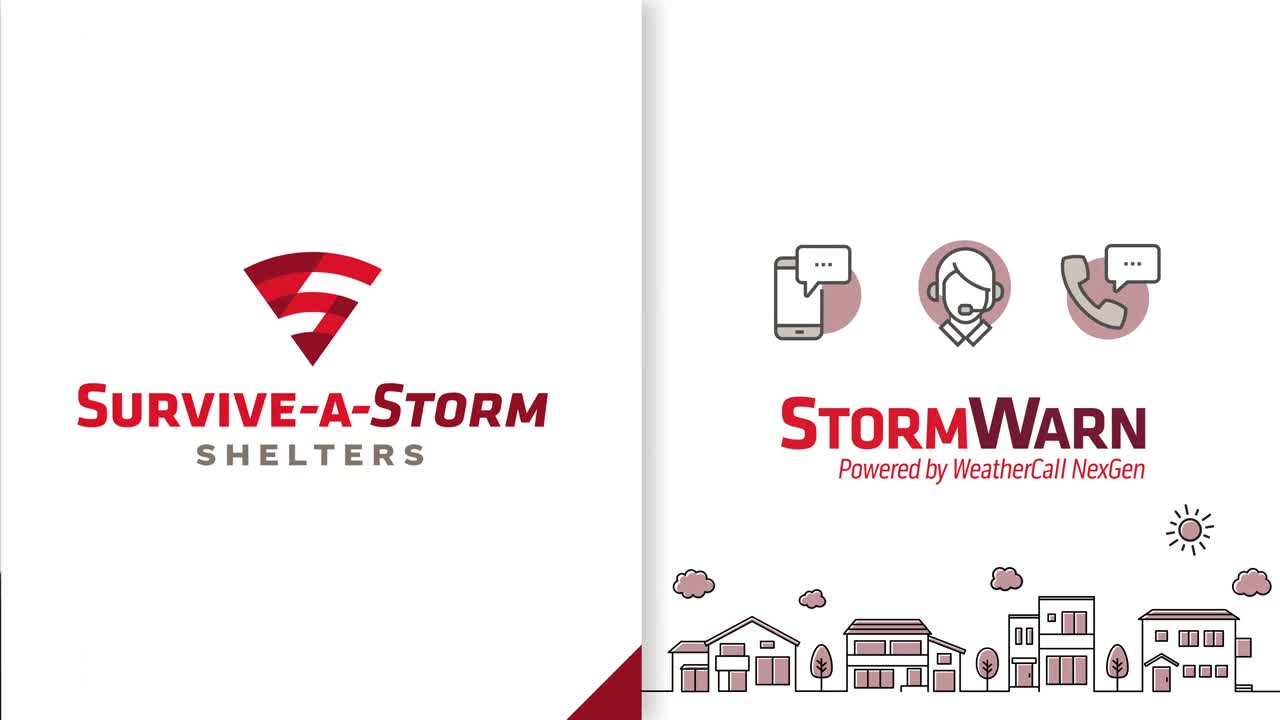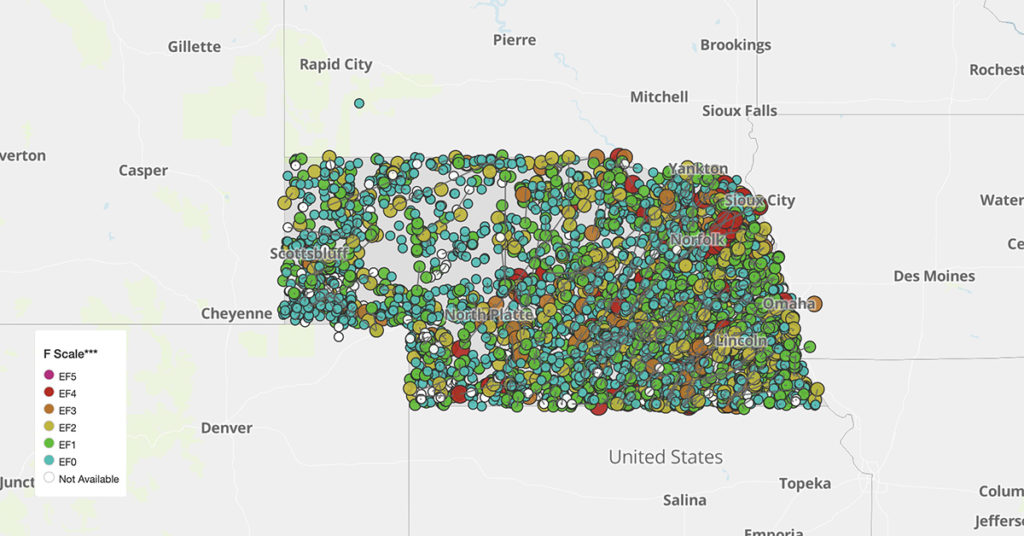Welcome to our guide to staying safe from tornadoes. Our goal with this webpage is to provide you with the information you need to prepare yourself for tornado season in Nebraska.
As part of Tornado Alley, Nebraska experiences a high frequency of tornadoes, and it's important to be aware of the risks and take proactive steps to protect yourself, your loved ones, and your property. Tornado Alley is a region in the central United States where tornadoes have historically been the most common, due to atmospheric conditions, being in an area where cold, dry air from the Rockies collides with warm, dry air from the Gulf of Mexico.
From tornado history to safety tips and shelter FAQs, we've got you covered. So, take a few minutes to explore each section of this page, and be sure to check out our resources to prepare for tornadoes. By taking these simple steps, you can help ensure that you're ready to face the storm and stay safe during tornado season.
To get started, here’s a list of some Nebraska tornado history to give you an idea of the scope of the area’s tornado activity.
- The first recorded tornado in Nebraska was in 1854 in Lancaster County.
- Nebraska ranks fourth in the United States for the number of tornadoes that occur each year.
- On May 30, 1879, a tornado in Irvington, Nebraska killed 18 people and destroyed 300 buildings.
- The deadliest tornado in Nebraska history occurred on June 16, 1938, in O’Neill, where 5 people died and 60 were injured.
- Nebraska’s largest tornado outbreak occurred on May 6, 1975, when 39 tornadoes were reported across the state, killing three people.
- On June 3, 1980, a tornado in Grand Island, Nebraska killed five people and injured 200.
- In 2004, the town of Hallam, Nebraska was hit by an EF4 tornado that caused extensive damage and killed one person.
- In 2014, a tornado outbreak in Nebraska saw 19 tornadoes touch down, causing significant damage in several areas.
- The National Weather Service office in Omaha, Nebraska is responsible for issuing tornado warnings and monitoring tornado activity in the state (and all over the country).
Documented Nebraska tornadoes since 1950
Preparing for Tornadoes in Nebraska
Tornadoes are a significant threat in Nebraska, and being prepared can ensure the safety of both individuals (and their families), and whole communities. With the state's ranking as fourth in the United States for the number of tornadoes that occur each year, it is essential to have a plan in place to protect yourself in case of a tornado emergency.
The first step in tornado preparation is to be aware of the signs of an approaching tornado. This could include watching for dark, rotating clouds, an unusual dark, greenish sky, or looking out for wall or funnel clouds off in the distance. When you see weather patterns like this, you should be monitoring the weather via a local TV station, or a weather radio. Some people also choose to use location-based tornado alert systems like StormWarn that inform them when their area is in immediate danger and it is time to take shelter.
When a tornado warning is issued, it is essential to be prepared to take immediate action and know where you will go to seek shelter. This could be a basement, designated tornado shelter (either private or community), or a small interior room on the lowest level of a building.
Having an emergency kit ready is also crucial in tornado preparation. The kit should include essentials such as water, food, blankets, a first aid kit, and a battery-powered weather radio to stay informed of weather updates. It is also essential to have a plan in place for communication with loved ones during or after the storm.
Being prepared for tornadoes is not just an individual responsibility but also a community one. Communities can work together to develop emergency plans, conduct drills, install community tornado shelters and ensure that warning systems are in place and functioning correctly. In addition, community members can take measures to secure their property, by clearing debris from their yards and securing lawn furniture or other items that could be swept away during a tornado. Working together as a community can increase the effectiveness of tornado preparation and reduce the impact of tornadoes on Nebraska.


Tornado Shelters Near Me in Nebraska
Basements are relatively common in Nebraska, because tornadoes are a frequent occurrence. According to data from the U.S. Census Bureau, about 76.9% of Nebraska homes have a basement or a partial basement. This is higher than the national average of 54.4%, likely due to the fact that many Nebraskans recognize the importance of having a safe place to seek shelter during tornadoes. But, don’t stop reading if you have a basement!
While basements can provide excellent protection from tornadoes, remember that not all basements are created equal. For example, partial basements or “walk-out” basements may not be any safer than a home with no basement since the occupants could be injured by flying debris if the house above them is destroyed, or if the windows in a finished basement are blown out. To be safe from a tornado, a basement needs to have reinforced concrete walls, in an interior area with no windows, that is free from clutter. And, it’s important that all occupants are able to access the area easily.
For the 23.1% of Nebraskans who don’t have a basement, or for those who have basements that are not tornado-safe, or for those Nebraskans who live in multi-family housing, like condos, apartments or mobile home parks, it is essential to know what you will do to stay safe!
For homes without basements, or those which are not tornado-safe, it can be relatively easy to install either an above-ground or below-ground tornado shelter that will keep you and your family safe! And, before you say anything about underground being the only place to stay safe from a tornado, it’s important to know that there are above-ground tornado shelters that are rated for protection against an EF5 tornado.
The availability of public tornado shelters is equally important since purchasing a tornado shelter is not within everyone’s reach. Public tornado shelters are typically operated by local government agencies, such as cities or counties. Some places to check for information on public tornado shelters in Nebraska include:
- Local emergency management agencies, which are responsible for coordinating emergency response efforts in their jurisdictions, including providing information on public tornado shelters. You can usually find contact information for your local emergency management agency on your city or county's website. Nebraska’s is the Nebraska Emergency Management Agency (NEMA) and it falls under the jurisdiction of the military and the state’s Adjutant General.
- During severe weather events, local news media may provide information on public tornado shelters in the affected area. This information may be available on the news station's website or social media accounts.
- The American Red Cross provides information on emergency shelter locations during disasters, including tornadoes. You can find information on their website or by contacting your Nebraska Red Cross chapter.
- Some communities may designate community centers or schools as public tornado shelters. Contact your local community center or school district to see if they have designated tornado shelters available to the public.
Not all communities in Nebraska have designated public tornado shelters. For this reason, it's important to have a plan in place for seeking safe shelter.
Nebraska Tornado Safety Tips
- Stay up to date with local weather forecasts and pay attention to weather conditions, especially during tornado season. Sign up for weather alerts and warnings through your local emergency management agency or weather radio. It’s also a good idea to look into using a location-based tornado alert system, like StormWarn, so that you will know exactly when to get to shelter.
- Make sure you have a tornado plan in place for your family or business. Practice tornado drills with your family or co-workers to ensure everyone knows what to do in case of a tornado emergency.
- Prepare an emergency kit with essentials such as water, food, blankets, a first aid kit, and a battery-powered radio to stay informed of weather updates.
- Stay informed of weather conditions and watch for signs of an approaching tornado.
- When a tornado warning is issued or if you see signs of an approaching tornado, seek shelter immediately in a safe place. Do not wait until you can see the tornado to take action.
- If you’re not in a designated storm shelter, seek shelter in an interior room, on the lowest level. Anecdotally, some experts recommend an interior bathroom because the plumbing in the walls may serve to brace them. If available, use a sports or bike helmet to cover your head and cover yourself with a blanket or mattress for additional protection. Stay away from windows and exterior walls.
- After the tornado has passed, be cautious of debris and downed power lines. Do not enter damaged buildings until they have been cleared as safe by authorities.

Nebraska Tornado Shelter FAQs
Question: What are the different types of tornado shelters available in Nebraska?
Answer: There are several types of tornado shelters available in Nebraska, including underground shelters, above-ground shelters, and some that can be added to a home or business.
Question: How do I know if there is a tornado shelter in my Nebraska community?
Answer: You can check with your local emergency management agency or contact your city or county government to find out if there are any public tornado shelters in your community.
Question: Are there any grants or programs available to help Nebraskans install tornado shelters?
Answer: Yes, there are several grants and programs available to help install tornado shelters, including the Federal Emergency Management Agency's (FEMA) Hazard Mitigation Grant Program. It depends on your location and the grant money that is available there.
Question: Can pets be accommodated in tornado shelters in Nebraska?
Answer: It depends on the specific tornado shelter. Some public shelters may allow pets, while others may not. If pets are a priority for you, it’s a good idea to consider installing a tornado shelter in your home.
Question: How can I ensure the tornado shelter I use is structurally sound and safe?
Answer: In Nebraska, you should ensure that the tornado shelter you use meets or exceeds the standards set by FEMA and other relevant agencies. You should also have it inspected by a professional to ensure that it is structurally sound and safe.
Question: How do I know when it's safe to leave a tornado shelter in Nebraska?
Answer: You should wait until local authorities issue an all-clear or give other instructions before leaving a tornado shelter in Nebraska. You should also listen to local news or weather updates for information on when it's safe to leave.

Know when severe weather is about to strike and when it's time for you to take shelter with our StormWarn texting program.

Emergency Management Offices in Nebraska
When seeking assistance from emergency management offices in Nebraska, it's crucial to have accurate contact information at your fingertips. Below is a list of contacts for the Nebraska Emergency Management Agency (NEMA) and local emergency management offices across the state. Please note that while we strive to provide accurate and up-to-date information, we cannot guarantee the completeness or accuracy of these details. We recommend contacting local offices directly for the most current information.
Nebraska Emergency Management Agency (NEMA)
Primary Contact:
- Address: 2433 NW 24th Street, Lincoln, NE 68524-1801
- Phone: 402-471-7421
- Email: [email protected]
- NEMA Contact Page
Regional Emergency Management Offices:
Douglas County
- Emergency Manager: Paul Johnson
- Phone: 402-444-5202
- Address: 15335 W. Maple Rd., Suite 202, Omaha, NE 68116
- Email: [email protected]
Lancaster County
- Emergency Manager: Jim Davidsaver
- Phone: 402-441-7441
- Address: 1200 Radcliff Rd., Suite 200, Lincoln, NE 68512
- Email: [email protected]
Sarpy County
- Emergency Manager: Lynn Marshall
- Phone: 402-593-5785
- Address: 1210 Golden Gate Dr., Suite 1300, Papillion, NE 68046
- Email: [email protected]
Buffalo County
- Emergency Manager: Steve Blohm
- Phone: 308-233-3700
- Address: 1512 Central Ave, Kearney, NE 68847
- Email: [email protected]
Gage County
- Emergency Manager: Lisa Wiegand
- Phone: 402-223-1305
- Address: 612 Grant St, Beatrice, NE 68310
- Email: [email protected]
Hall County
- Emergency Manager: Jon Rosenlund
- Phone: 308-385-5362
- Address: 1210 N. North Rd., Grand Island, NE 68803
- Email: [email protected]
For a comprehensive directory of all emergency management offices in Nebraska, visit the NEMA EM Directors List (NEBRASKA EMERGENCY MANAGEMENT AGENCY) (NEBRASKA EMERGENCY MANAGEMENT AGENCY).
Stay informed and be prepared by reaching out to your local emergency management office!



